The Square is located in The Eixample which is a district between the old city and what were once surrounding small towns. The Eixample is characterized by long straight streets, a strict grid pattern crossed by wide avenues, and square blocks with chamfered corners. The idea behind the project is to analyse the space through the characteristics of the selected square and propose a new approach to the space that responds to the arising necessities while creating a developable and adaptable environment that also builds a relationship with the other blocks in the Super Block.
The selected square stands in the intersection between Carrer del Consell de Cent and Carrer de Calabria . The main observation about the square is the lack of interaction between the place and the users in spite of its potential (Figure_3). Though mapping of the movement of people in specific hours,despite there is a great potential especially for children, the square is generally observed to be used as a passage. In relation and addition to this, there is a lack of playgrounds around the area despite there are a couple of Schools including Institut Viladomat which stands in the specified square.
Though experimentation with machinic practices, the logic behind the architectural approach and intervention to the space is defined. Wind Drawing Machine which came into life from the merging of the Backbone Drawing Machine ,which has a determined logic of system and input data; and Dancing Petals, which involves the use of wind as the driving force of matter to achieve drawing results.
Logic behind the Wind Drawing Machine is that two movements generate the drawing. The movement of the holding structure and wind.
The main structure holding the pens is controlled by an arduino code.It is flanked by two fans that simultaneously emit wind setting the pens to spinning and waving motion. The spinning motion is made possible by paper propellers folded around the pens.
This complex dialog among the different elements: main structure, arduino, fans, wind, propellers, pens, paper and line drawing created a dynamic machinic environment ready to receive urban data to draw the beginning of what can become an active public space.
From this machinic environment and its basic logics behind the system, the intervention and architectural approach to the square was defined. (Figure_ 2)
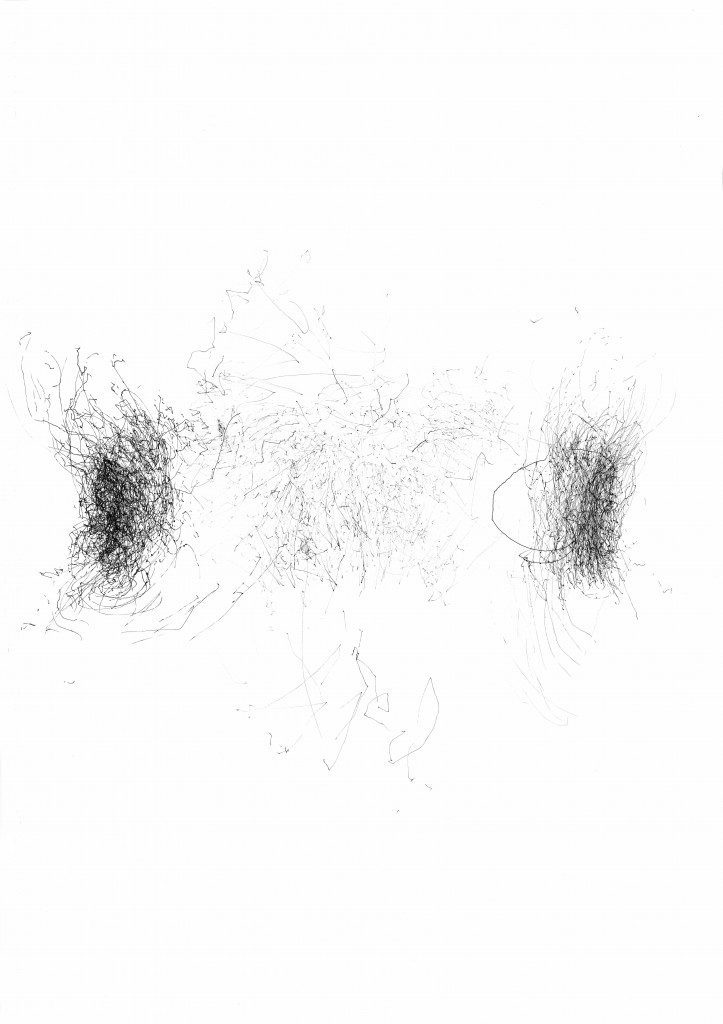
Figure 1. Drawing through Wind Drawing Machine.
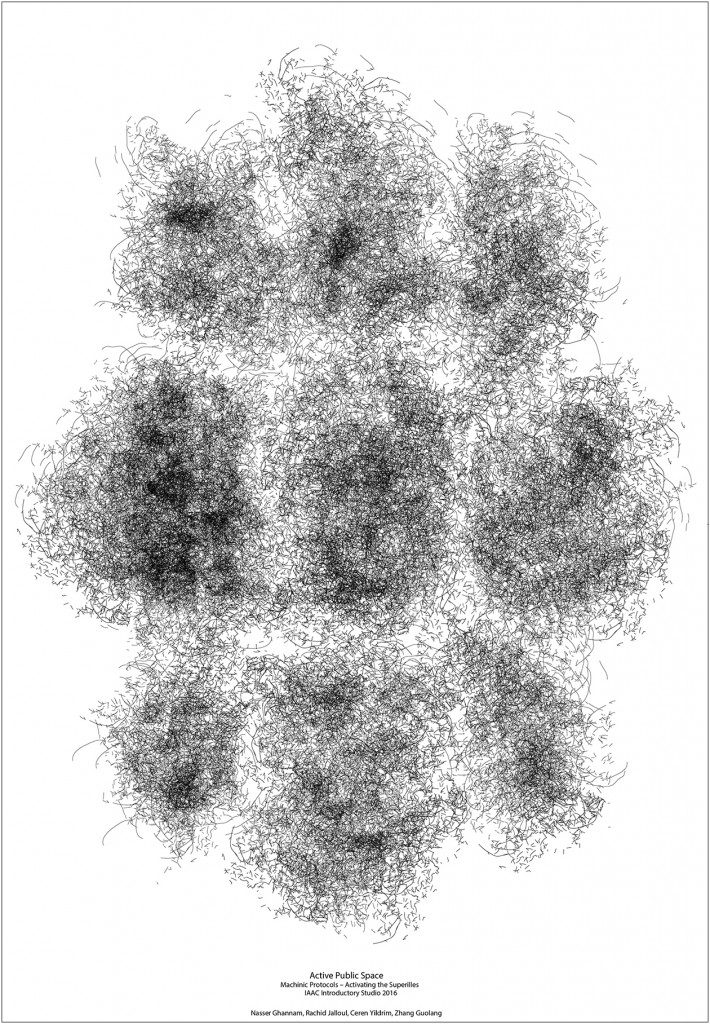

Figure 2. Logic Drawings through Wind Drawing Machine.
The interventional approach derived from the main logics and protocols of the drawing machine aims to solve the problems within the area and propose an adaptive environmental space for children basically while it may result in a much more active usage of the public space in between various age profiles. The project proposed is a number of units which stand on a gridal basis in the square. The units are reacting to the flow of the people around themselves in a way that they open pathways for the movement while they create spaces among themselves where no movement occurs which becomes public playgrounds and gathering places for children. The system is adaptable to the differing flow of people during various periods of time during the day.
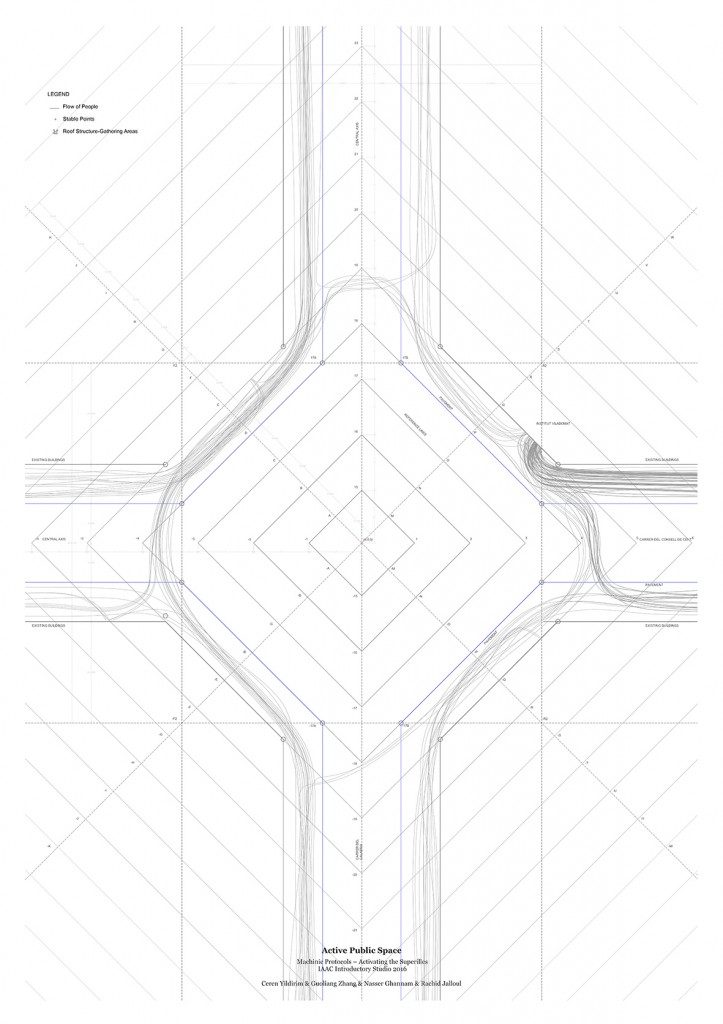
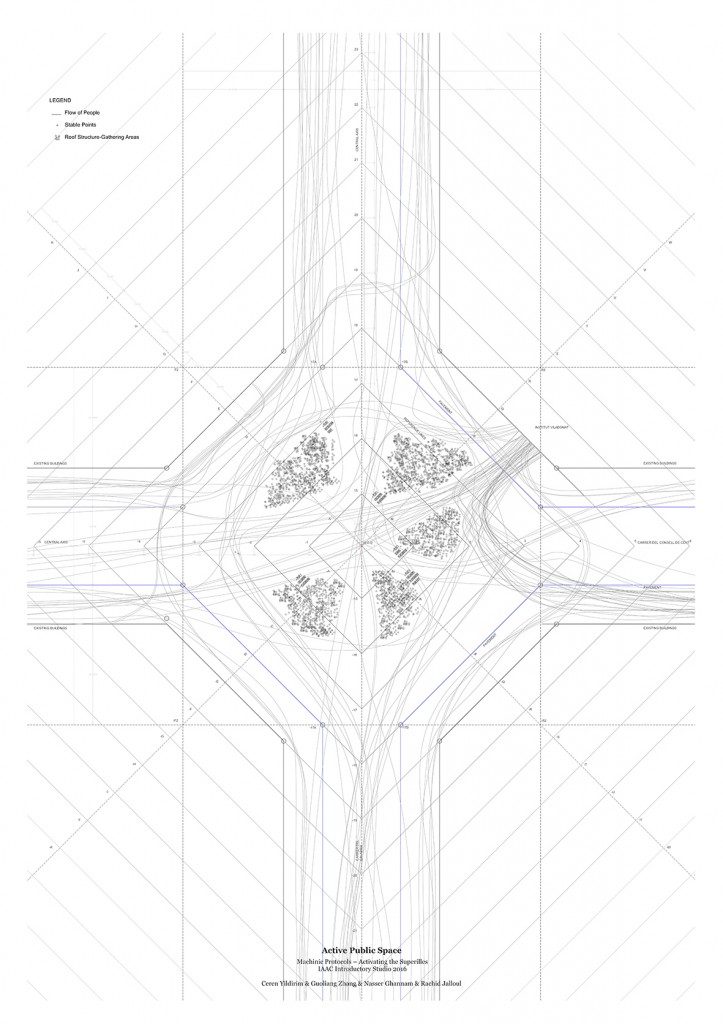
Figure 3.The flow of people before the intervention.
Figure 4.The flow of people after the intervention.
Lines showing the flow which create the playgrounds in between.
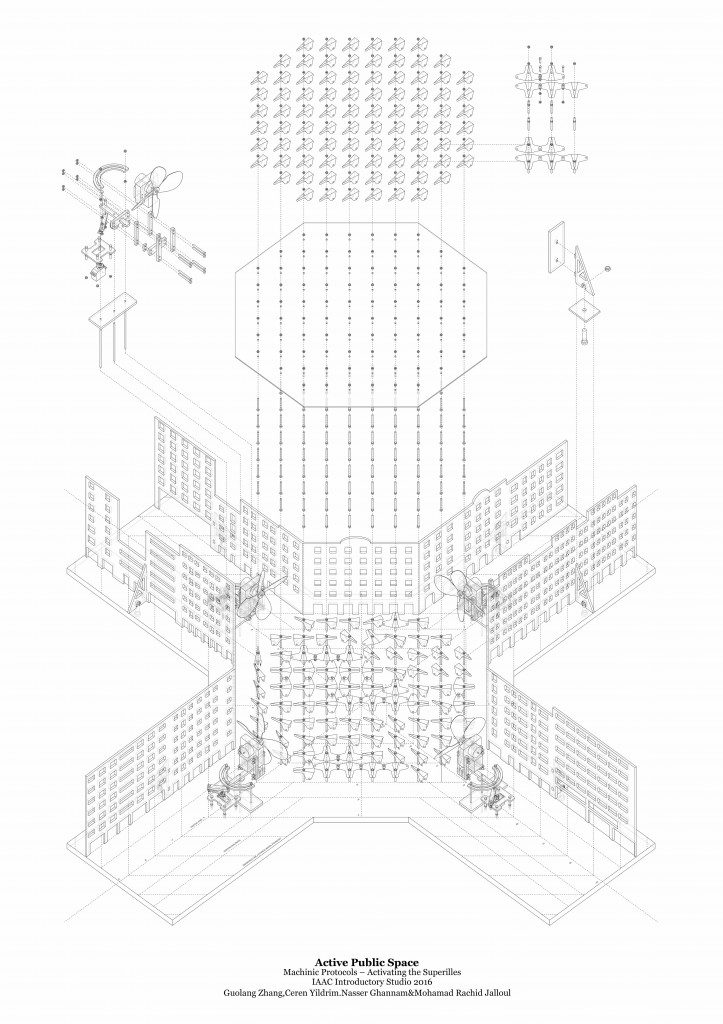
Figure 5:The iso.
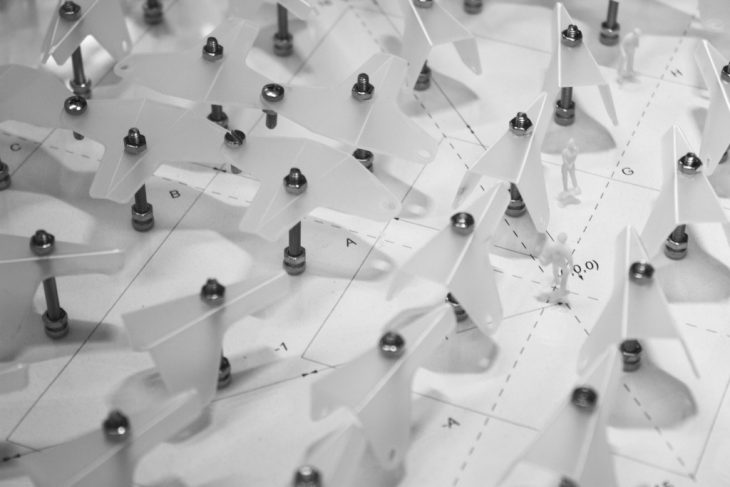
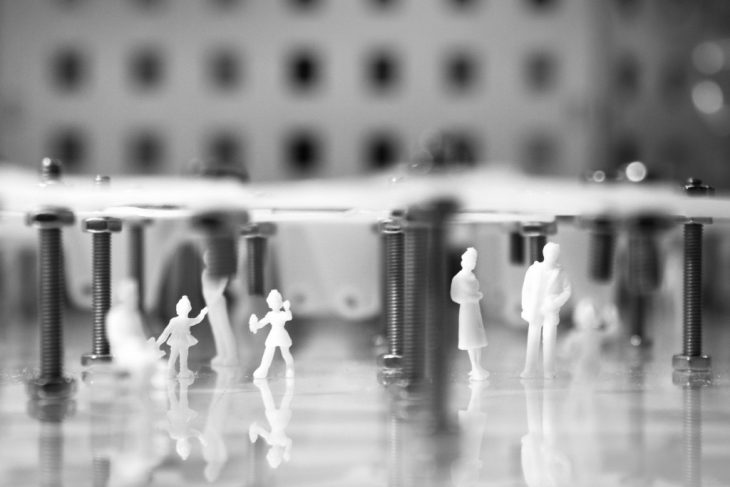
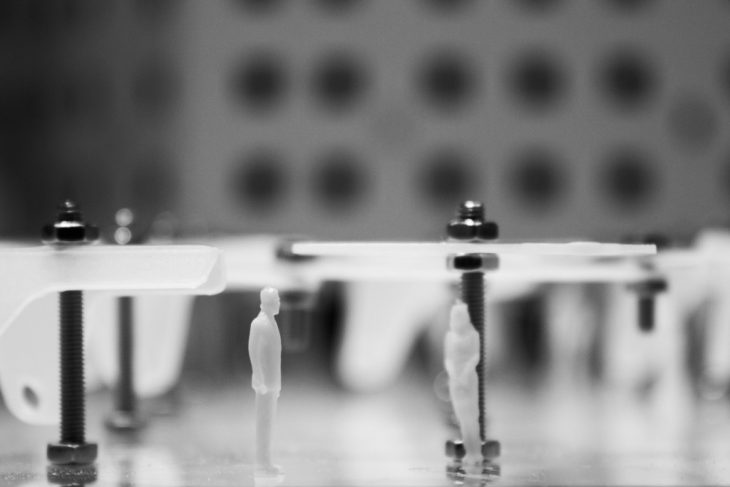

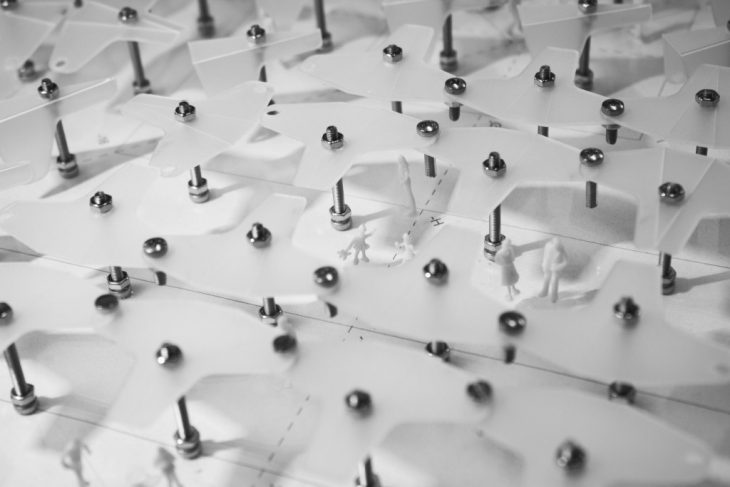
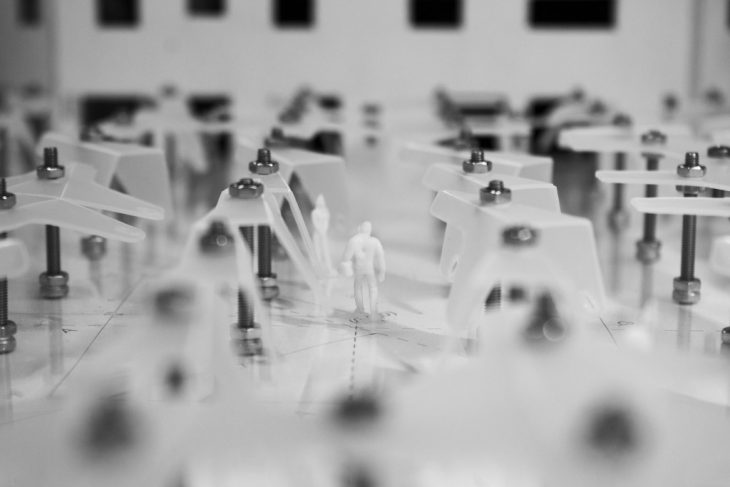
Performative Landscape-Super Block is a project of IaaC, Institute for Advanced Architecture of Catalonia, developed at Master in Advanced Architecture in 2016/2017 by:
Students: Guoliang Zhang, Ceren Yildirim,Nasser Ghannam,Rasheed Jalloul
Faculty: Edouard Cabay, odrigo Aguirre
